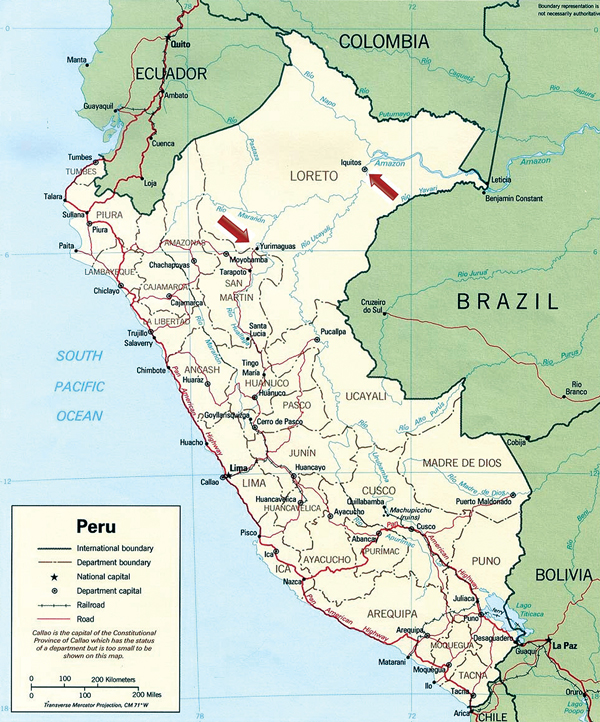Volume 21, Number 5—May 2015
Research
Itaya virus, a Novel Orthobunyavirus Associated with Human Febrile Illness, Peru
Figure 1

Figure 1. Geographic distribution of the confirmed Itaya virus human cases (arrows) identified as part of the febrile disease surveillance project in Loreto, Peru during 1999 and 2006
Page created: April 17, 2015
Page updated: April 17, 2015
Page reviewed: April 17, 2015
The conclusions, findings, and opinions expressed by authors contributing to this journal do not necessarily reflect the official position of the U.S. Department of Health and Human Services, the Public Health Service, the Centers for Disease Control and Prevention, or the authors' affiliated institutions. Use of trade names is for identification only and does not imply endorsement by any of the groups named above.